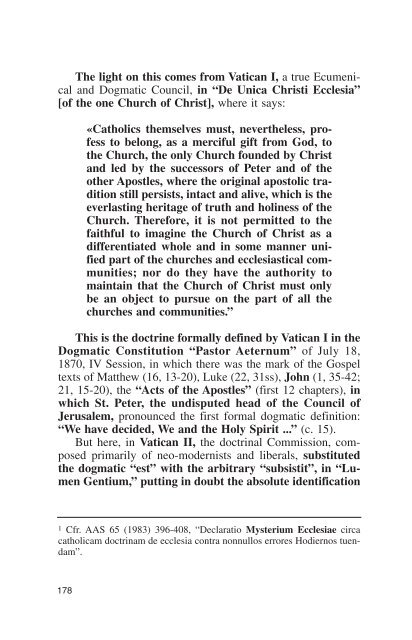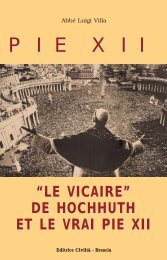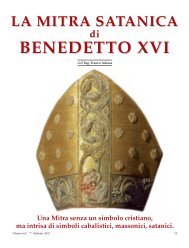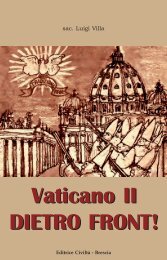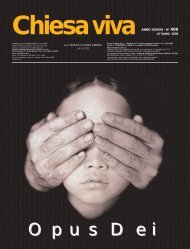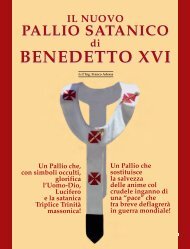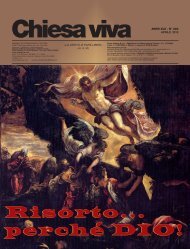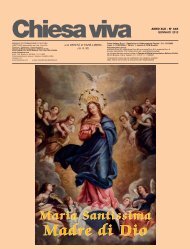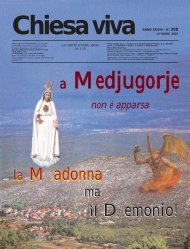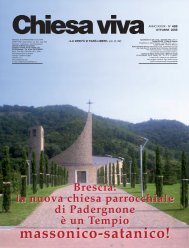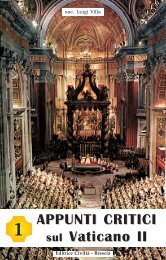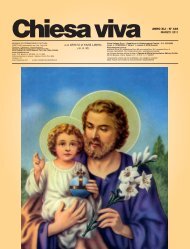Vatican II ABOUT FACE! - Chiesa viva
Vatican II ABOUT FACE! - Chiesa viva
Vatican II ABOUT FACE! - Chiesa viva
You also want an ePaper? Increase the reach of your titles
YUMPU automatically turns print PDFs into web optimized ePapers that Google loves.
The light on this comes from <strong>Vatican</strong> I, a true Ecumenical<br />
and Dogmatic Council, in “De Unica Christi Ecclesia”<br />
[of the one Church of Christ], where it says:<br />
178<br />
«Catholics themselves must, nevertheless, profess<br />
to belong, as a merciful gift from God, to<br />
the Church, the only Church founded by Christ<br />
and led by the successors of Peter and of the<br />
other Apostles, where the original apostolic tradition<br />
still persists, intact and alive, which is the<br />
everlasting heritage of truth and holiness of the<br />
Church. Therefore, it is not permitted to the<br />
faithful to imagine the Church of Christ as a<br />
differentiated whole and in some manner unified<br />
part of the churches and ecclesiastical communities;<br />
nor do they have the authority to<br />
maintain that the Church of Christ must only<br />
be an object to pursue on the part of all the<br />
churches and communities.”<br />
This is the doctrine formally defined by <strong>Vatican</strong> I in the<br />
Dogmatic Constitution “Pastor Aeternum” of July 18,<br />
1870, IV Session, in which there was the mark of the Gospel<br />
texts of Matthew (16, 13-20), Luke (22, 31ss), John (1, 35-42;<br />
21, 15-20), the “Acts of the Apostles” (first 12 chapters), in<br />
which St. Peter, the undisputed head of the Council of<br />
Jerusalem, pronounced the first formal dogmatic definition:<br />
“We have decided, We and the Holy Spirit ...” (c. 15).<br />
But here, in <strong>Vatican</strong> <strong>II</strong>, the doctrinal Commission, composed<br />
primarily of neo-modernists and liberals, substituted<br />
the dogmatic “est” with the arbitrary “subsistit”, in “Lumen<br />
Gentium,” putting in doubt the absolute identification<br />
1 Cfr. AAS 65 (1983) 396-408, “Declaratio Mysterium Ecclesiae circa<br />
catholicam doctrinam de ecclesia contra nonnullos errores Hodiernos tuendam”.


